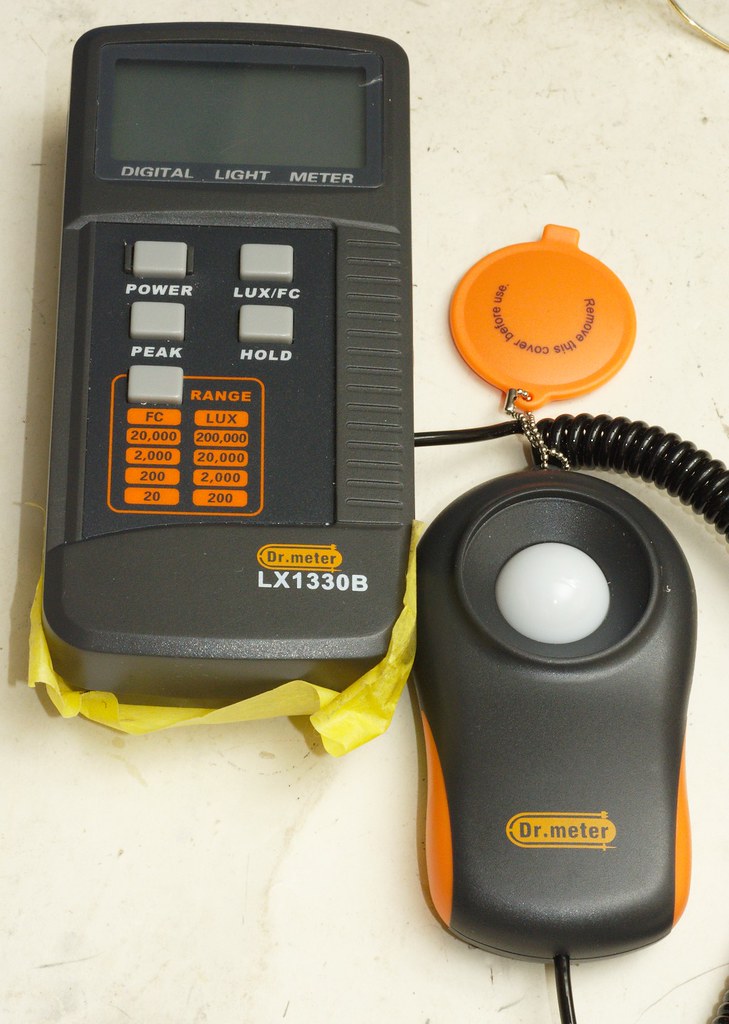I have one of the “Dr. meter” LX1330B Lux meters that I bought before I knew better….
I got reading the post from djozz :
And that led me down the rabbit hole to the earlier tests.
Which indicate that my meter basically sucks. Oh Well….

I wanted to get something to make a cheap light sphere. Or in my case a foam cooler.
Instead of plugging in a constant to convert lux to lumens, I decided to try to get some sort of direct reading in lumens by putting various filters in front of the sensor.
I really only wanted to get something to use for run-time tests. I need something that is sort of linear across the various lumen outputs to make it useful.
I have mixed results. Using lights of semi-known values - It seems OK in the middle values say 300 to 1000 ish lumens. It reads too high in the lower values and too low in the higher values.
After reading the djozz inspired threads, I got out my screwdriver to see what there is to see.

The main board has two adjustment points. What to do with them I haven’t a clue.

The flip side just has the switch points and connection to the display.

The sensor is hidden under the expected filter. Looks fairly centered on my meter.
It looks awfully familiar…

Here is the OSRAM BPW34 PIN photodiode next to the Dr. meter sensor.
This is the sensor made famous in Terry Oregon’s sensor thread for use in measuring PWM:
And my build using it based on Terry’s thread:
I wonder if it’s possible to use one of these to make a “lux/lumen/something?” meter that could be used to get accurate measurements across a larger scale without having to hope for a “good version” Tasi from China or spending $$ on an actual good quality meter.
I have been playing with the sensor using the PICO Logging software and looking at the voltages generated by various lights.
There seems to be a sweet spot, and just like this Dr. meter, Low lumens don’t seem to be in accord with the middle values, and the high end is not showing as big a change in voltage as expected.
I also tried a simple solar PV cell.

It is very responsive in the lower lumen range. At the brighter end it shows reduced response to brightness change.
I’ve been playing with using a series of filters in front of the PV cell to try to bring the brighter lights down into the sweet zone (as it were).
Being able to use the data logging software and some sort of sensor is miles ahead of shooting time lapse of the lux meter and pulling out time/lux values by hand.
I haven’t reached any conclusions yet. I’m just sort of rambling on and fishing for suggestions.
BTW - What are you folks using as a sensor for your run time plots?
All the best,
Jeff